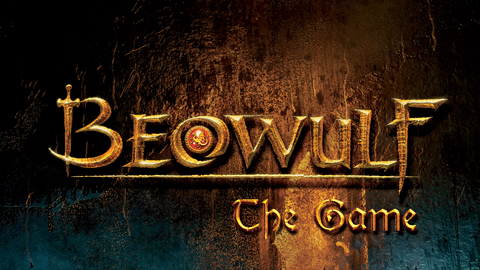“Old Man and the Sea” was presumably part of Hemingway’s “Sea Book trilogy.” The Bimini and Cuba sections of his “Islands in the Stream” were the “The Sea When Young” and “The Sea When Absent” parts of the trilogy, and Santiago’s story was supposed to be titled “The Sea in Being.” The presence of the sea in the novel is so pervasive that it assumes the place of the sort of a second protagonist in the novel. An examination of the relationship between the old man and the sea facilitates the understanding of the Sea’s significance and reveals much about the main protagonist, Santiago.
The Old Man’s Relationship with the Sea: Critical Appreciation
On the very basic level, the old man being a fisherman, the relationship between the Sea and himself is what a worker has with his workplace. The sea furnished him his daily wages in the form of fish. The identity of the old man as a fisherman completely depended upon the Sea. He was considered one of the best among his lot when he had caught good fishes, but a dry fishing spell of eighty-four days had led his contemporaries to call him “salao” – the worst kind of unlucky. In this respect, the Sea became the domain where the old man could assert his individuality and his existential identity. It became the decider of whether or not Santiago was worthy enough to have a disciple in Manolin. However, examining the relationship between the man and the sea merely in this light would be an act of oversimplification on the part of the readers since this relationship has a lot more to it than meets the eye.
Noticing the parable form of the novel, a lot of critics have conjectured that the relationship between the old man and the sea symbolizes the relationship between man and the world. Just like the Sea with its magnificent marlins had treasures hidden for fishermen who would dare to venture deep, even the world stores rewards for humans who would show the courage of claiming them by sailing through uncharted waters. One has to take a chance as Santiago did. Just like the world sometimes throws hurdles on the path of the attainment of one’s cherished goals, the Sea made it impossible for Santiago to take home his bounty of the Marlin. Through the unique relationship between Santiago and the sea, the parable teaches the lesson that sometimes defeats is inevitable. However, man can still emerge victorious through the nobility of his human striving.
An examination of the relationship between Santiago and the Sea would benefit much from the adoption of a post-structuralist perspective through the binary of la mar and el mar and the archetypal binary of the giver and the taker. In the Spanish language, the Sea or the mar had both masculine and feminine attributes depending upon the way in which it was being viewed. Focusing on the la mar and el mar binary, Hemingway writes – “He always thought of the Sea as la mar which is what people call her in Spanish when they love her………. Some of the younger fishermen, those who used buoys as floats for their lines and had motorboats, bought when the shark livers had brought much money, spoke of her as el mar which is masculine”. This passage underpins how an analysis of this binary is crucial to better understanding the old man’s relationship with the sea. The younger fishermen who would consider the sea as el mar or masculine had a very professional relationship with the sea. They had no respect for the sea, and thus they were alienated from nature. Santiago, the old fisherman who regarded the sea as la mar, a benevolent mother figure, was guided by some ethical values and understood the sea from his depth of experience of many years as a fisherman. His close affinity with the Sea was apparent in his love for the many denizens of the water and through his knowledge and insight into the mysteries of the Sea. This intimate relationship gets all the more impressed upon the reader through a contrast with the crude, feeling-less relationship of the younger fishermen with the self-same sea.
The other binary crucial to understanding the equation between Santiago and the sea is that of the giver and the taker. Just like the sea in Synge’s Riders to the Sea, the sea in this novel of Hemingway’s is both the preserver and the destroyer for Santiago. At the beginning of the novel, Santiago is shown to be victimized by the destructive streak of the sea, which denied him fish for eighty-four long days and left him at the mercy of his student-companion Manolin and generous café owners. However, soon the role of the sea as the preserver in Santiago’s life gets identified when the Sea unites him with a Marlin fish larger in size than his skiff and provides him with nourishment in the form of eatable fishes such as tuna and dolphins. At one point, the roles of preserver and destroyer were performed by the Sea almost simultaneously as the marlin, in refusing to line along with Santiago’s skiff, began to drain him of his life completely. The malevolence of the sea was dramatized again with the arrival of the sharks. The old man fought a gallant battle with the shark and, in turn, lost his gaff, tiller, and his knife, which resulted in the sharks taking away the best part of his marlin. This is a classic example of the Hegelian war of imperatives. Upon being viewed from the perspective of the second binary, the old man’s relationship with the Sea becomes one of the “struggles for survival.”
Thus we see that the relationship between the old man and the sea enhances the pleasure of critically appreciating the novel by virtue of its interpretation on various levels. What Hemingway intended for this relationship to be cannot be ascertained for sure. However, literature being subjective, this relationship has nothing to lose and much to gain by critical conjecture. Hope The Old Man’s Relationship with the Sea: Critical Appreciation helps. You can also refer to The Old Man and the Sea Essay: Man’s Archetypal Battle with Nature.
Updated by Anjali Roongta on 24th April 2023.
Some online learning platforms provide certifications, while others are designed to simply grow your skills in your personal and professional life. Including Masterclass and Coursera, here are our recommendations for the best online learning platforms you can sign up for today.
The 7 Best Online Learning Platforms of 2022
- Best Overall: Coursera
- Best for Niche Topics: Udemy
- Best for Creative Fields: Skillshare
- Best for Celebrity Lessons: MasterClass
- Best for STEM: EdX
- Best for Career Building: Udacity
- Best for Data Learning: Pluralsight
















